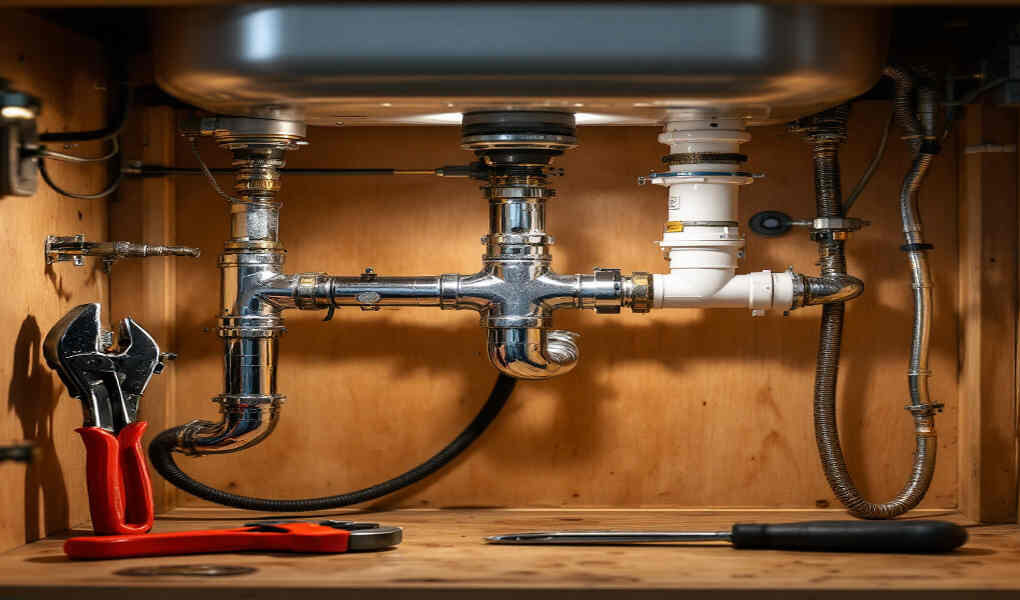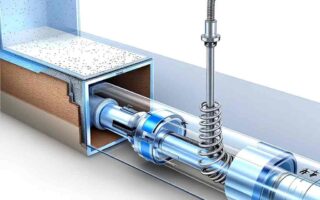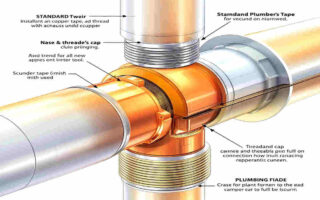Plumbing problems under the sink are one of the most common issues homeowners face. Whether it’s a clogged drain, a leaky pipe, or low water pressure, these inconveniences can disrupt your day-to-day life. The good news? Many of these issues are easier to fix than you might think, and you don’t always need to call a plumber.
Introduction: Why Fixing Sink Plumbing Matters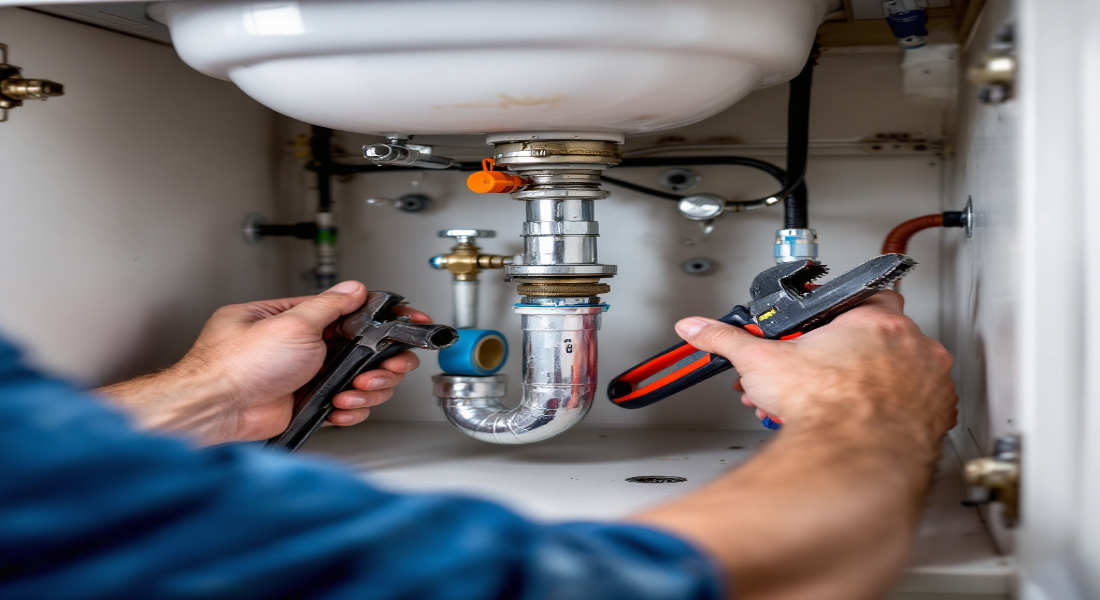
Plumbing issues under the sink can escalate quickly. What starts as a small drip or a slow drain could turn into a flooded cabinet or water damage to your home. Addressing these problems early is crucial—not just to save money on expensive repairs but also to maintain the functionality of your kitchen or bathroom.
The great news is that you don’t need to be a professional plumber to handle many of these issues. By learning some simple DIY plumbing techniques, you can fix problems under the sink and even prevent them from occurring in the future. This guide will help you identify the most common plumbing problems and teach you how to resolve them step by step. Let’s dive into the essentials of under-sink plumbing.
Understanding Your Sink Plumbing System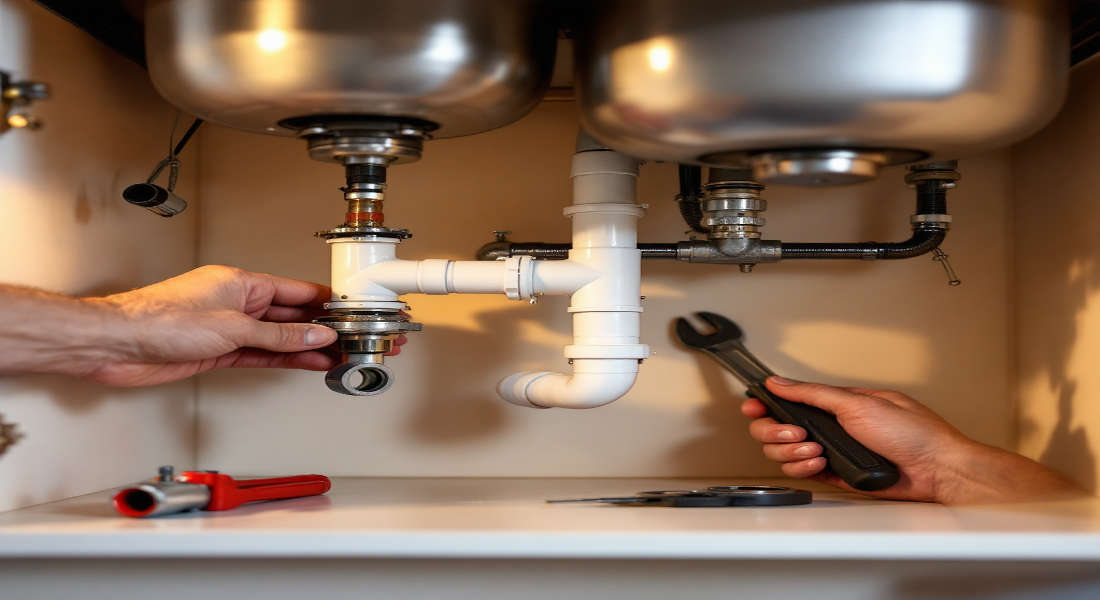
Before you can solve plumbing problems, it’s important to understand how your sink’s plumbing system works. Each component plays a specific role in ensuring water flows properly and waste drains efficiently. Here’s a breakdown of the key parts:
You may also read (first install indoor plumbing).
Components of Under-Sink Plumbing
- Pipes and Fittings
- These connect your sink to the main water supply and the drainage system. They’re usually made of PVC, copper, or stainless steel.
- P-Trap
- This U-shaped pipe underneath the sink prevents sewer gases from entering your home by trapping water in its curve.
- Valves
- Shut-off valves are located under the sink to control the flow of water. They’re essential for turning off the water supply during repairs.
- Drain
- The drain removes wastewater from the sink. Over time, it can become clogged with debris like hair, grease, or food particles.
- Faucet
- The faucet delivers water to the sink. It includes components like washers, O-rings, and cartridges that can wear out over time.
Materials Used in Plumbing
The most common materials for under-sink plumbing include:
- PVC (Polyvinyl Chloride): Lightweight and affordable, but not as durable as metal.
- Copper: Long-lasting and resistant to corrosion, but more expensive.
- Stainless Steel: Popular for its durability and sleek appearance.
Importance of Regular Maintenance
Inspecting your under-sink plumbing regularly can help you spot leaks or corrosion before they become serious. Cleaning the pipes and drains periodically also ensures everything flows smoothly. A few minutes of maintenance can save you from major headaches down the road.
Common Under-Sink Plumbing Issues and Their Causes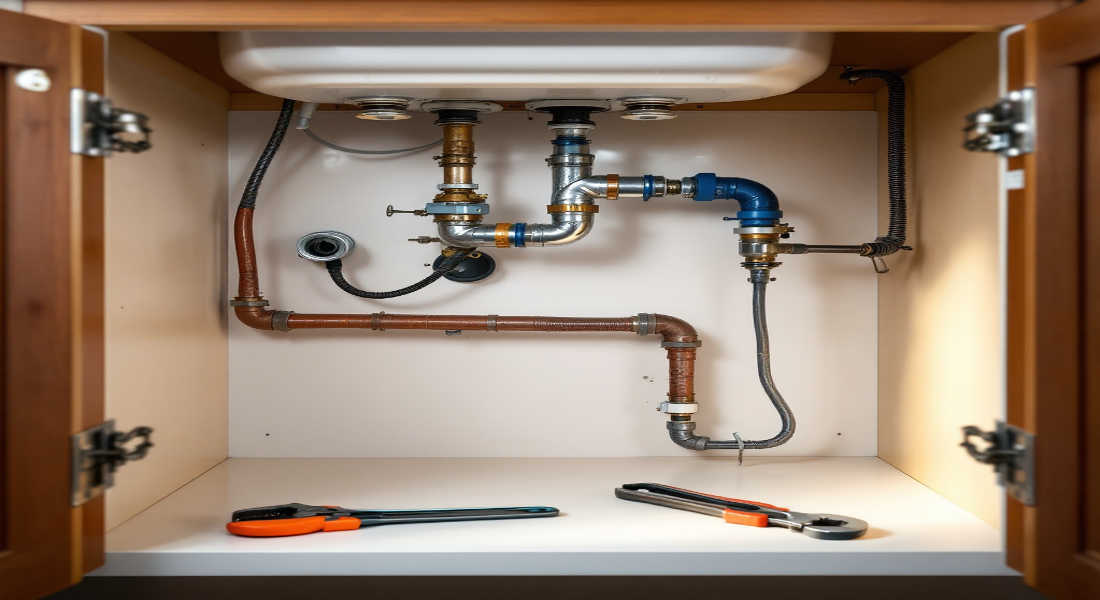
Plumbing problems under the sink are often caused by wear and tear, improper use, or lack of maintenance. Here’s a closer look at the most common issues and their underlying causes:
Clogged Drains
- Causes: Hair, grease, food particles, and soap scum can accumulate over time, leading to blockages.
- Symptoms: Slow-draining water, gurgling sounds, or complete blockage.
Leaking Pipes
- Causes: Loose connections, worn-out seals, or cracks in the pipes.
- Symptoms: Water pooling under the sink or visible drips.
Faucet Leaks
- Causes: Worn washers, damaged O-rings, or corroded components.
- Symptoms: Water leaking around the base of the faucet or from the handles.
Low Water Pressure
- Causes: A clogged aerator, faulty shut-off valves, or supply line problems.
- Symptoms: Weak water flow from the faucet.
Noisy Pipes
- Causes: Loose or improperly fastened pipes that bang against surfaces when water flows.
- Symptoms: Banging or rattling sounds when the faucet is turned on or off.
Foul Odors
- Causes: Decomposing food particles or residue trapped in the drain.
- Symptoms: Persistent, unpleasant smells coming from the sink.
Rusty or Corroded Pipes
- Causes: Age and prolonged exposure to moisture.
- Symptoms: Visible rust or discolouration on the pipes.
You may also read (static test in your home plumbing).
Step-by-Step Guide: How to Fix Home Plumbing Under Sink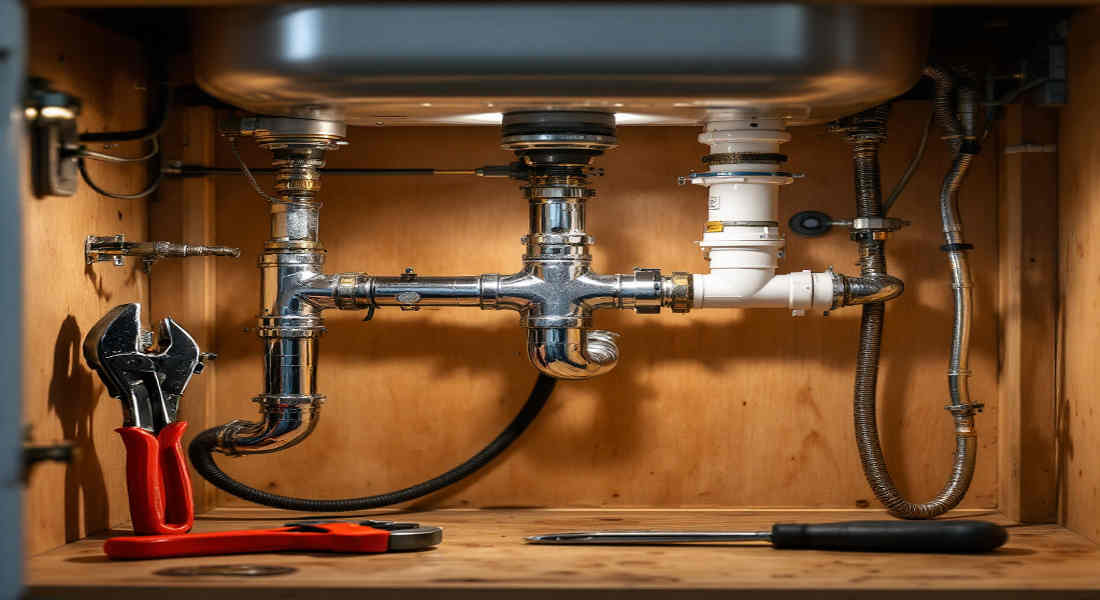
Now that you understand the common issues, let’s explore how to fix them. Follow these step-by-step instructions for effective DIY plumbing repairs.
Safety First
Before starting any repair:
- Turn Off the Water Supply: Locate the shut-off valves under the sink and close them tightly.
- Gather Tools: You’ll need pliers, a wrench, a bucket, a flashlight, and plumber’s tape.
- Prepare the Area: Place a bucket under the pipes to catch any water.
Fixing a Leaking Pipe
- Identify the source of the leak. Look for loose nuts or cracks.
- Tighten loose connections using pliers or a wrench.
- If the leak persists, replace worn washers or O-rings.
- Seal small cracks with plumber’s tape as a temporary fix.
Clearing a Clogged Drain
- Try using a plunger to dislodge the blockage.
- For stubborn clogs, use a drain snake or auger to remove debris.
- Natural remedy: Pour 1 cup of baking soda followed by 1 cup of vinegar down the drain. Let it fizz for 10 minutes, then flush with hot water.
- If necessary, detach the P-trap, clean it thoroughly, and reattach it.
Repairing a Leaky Faucet
- Shut off the water supply.
- Remove the faucet handle using a screwdriver.
- Replace damaged washers, O-rings, or cartridges.
- Reassemble the faucet and test for leaks.
Improving Low Water Pressure
- Unscrew and clean the aerator at the tip of the faucet.
- Check the shut-off valves to ensure they’re fully open.
- Replace any faulty valves or lines as needed.
Fixing Noisy Pipes
- Locate loose brackets or fasteners holding the pipes in place.
- Tighten the brackets or add pipe insulation to minimise noise.
Eliminating Foul Odours
- Pour a mixture of vinegar and baking soda down the drain and let it sit for 10 minutes.
- Install a drain strainer to catch food particles and debris.
Preventive Maintenance Tips for Under-Sink Plumbing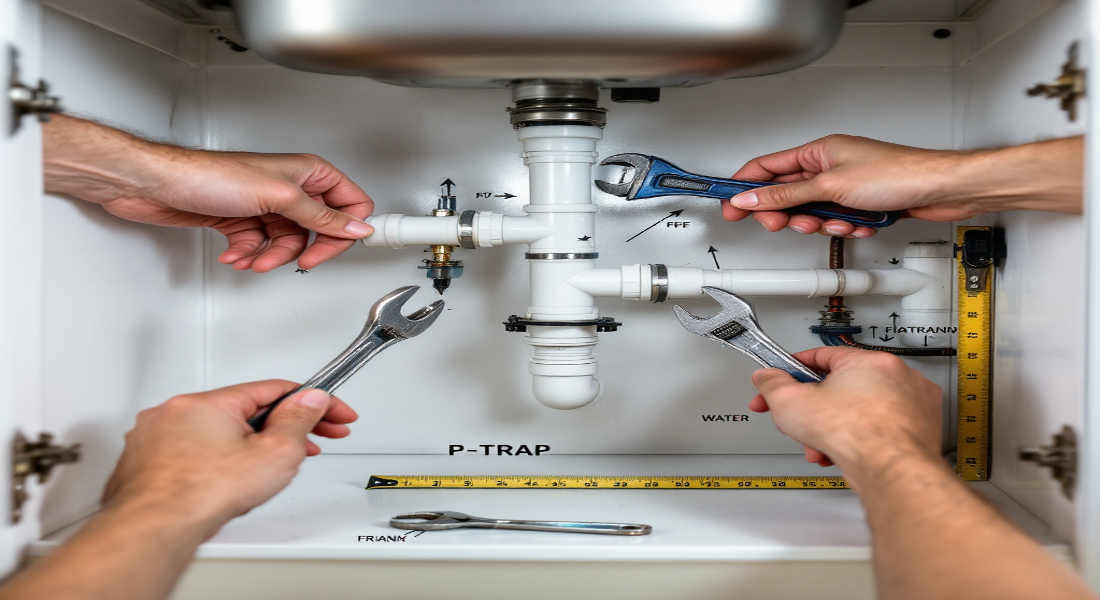
Prevention is always better than repair. Here are some tips to keep your plumbing in top shape:
- Inspect Regularly: Check pipes for leaks, rust, or corrosion.
- Clean Drains: Use a drain cleaner or natural solutions to prevent buildup.
- Avoid Grease: Never pour grease or oil down the drain.
- Use Strainers: Catch food and debris before they enter the pipes.
- Tighten Fittings: Address loose connections as soon as you notice them.
Maintenance Task Frequency
Inspect pipes and valves Monthly
Clean aerators and drains every 3 months
Check for leaks Monthly
Use vinegar for drains every 6 months
When to Call a Professional Plumber
Sometimes, DIY solutions aren’t enough. Here’s when you should call a professional plumber:
- Persistent or severe leaks.
- Major pipe damage or corrosion.
- Issues with the main water line or sewer connection.
- If DIY attempts don’t resolve the problem.
Professional plumbers have the tools and expertise to handle complex issues and prevent costly damage.
You may also read (how do i reroute home plumbing safely).

